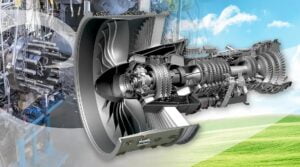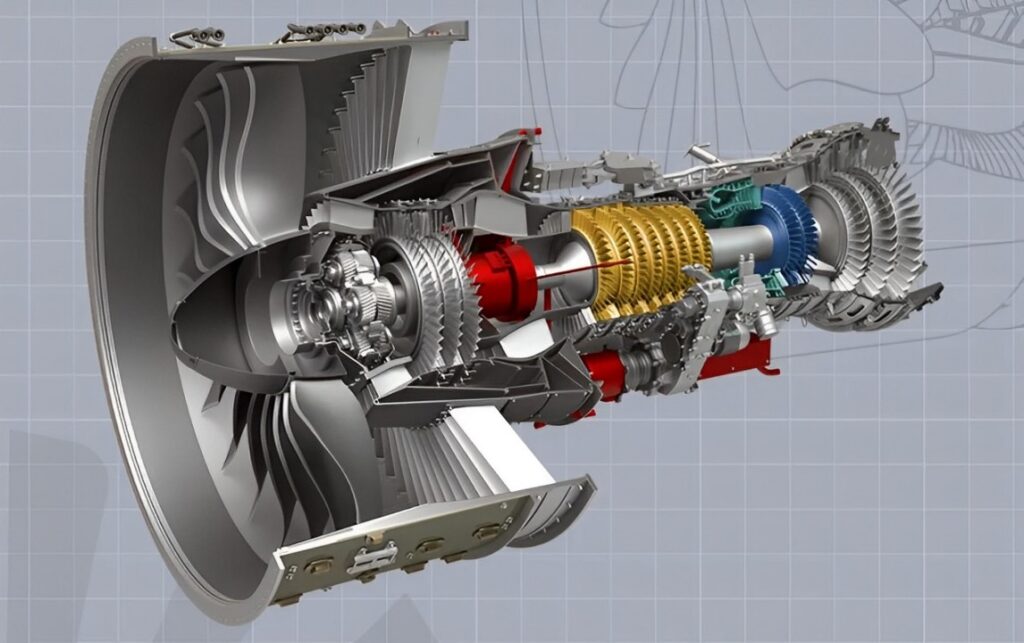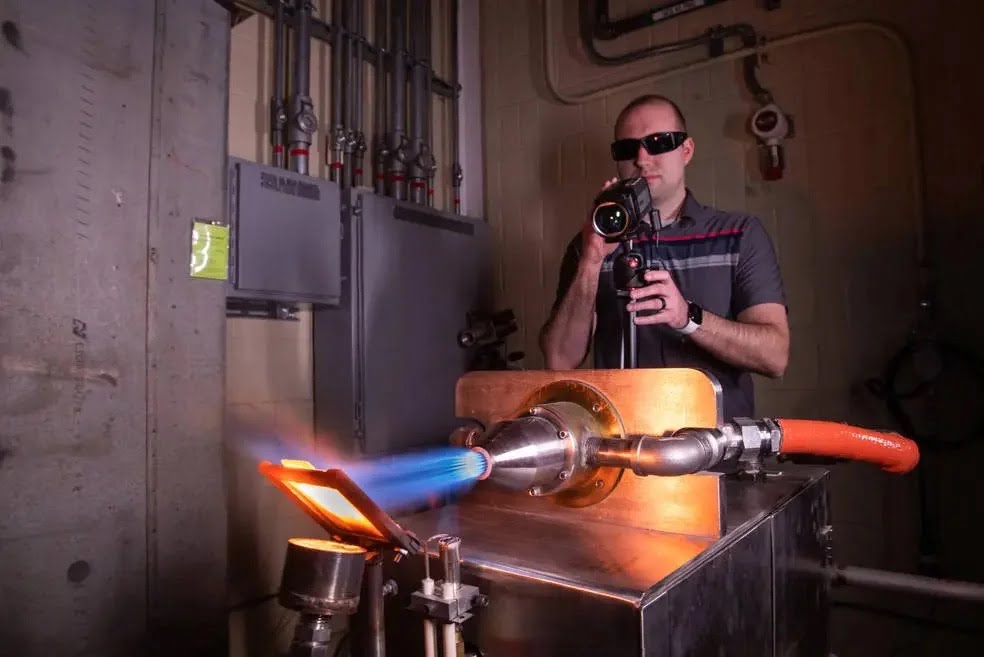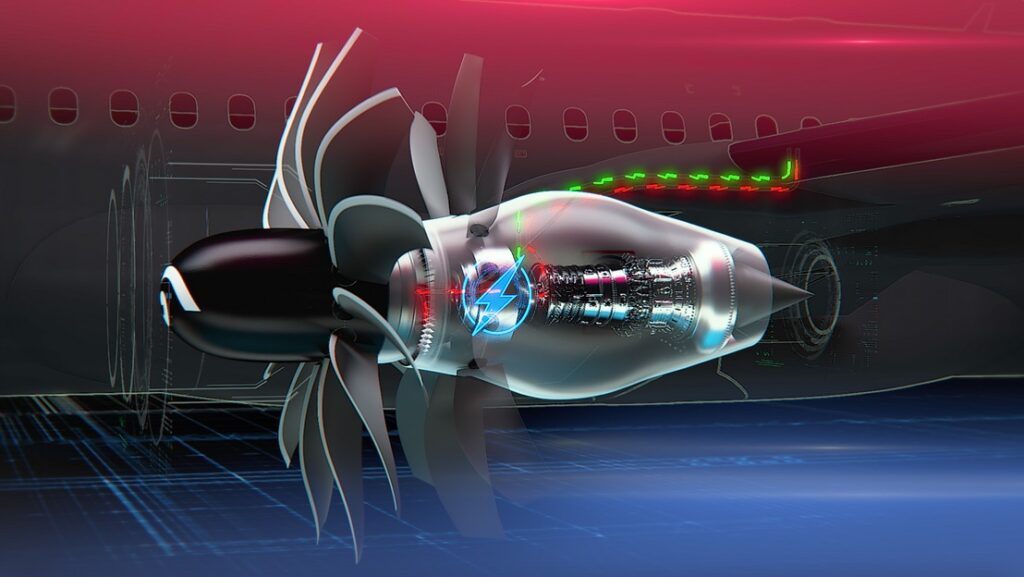ButSpeak.com
News which Matters.

In a significant stride towards a more sustainable aviation industry, NASA, in partnership with GE Aerospace, is advancing the design and testing of a new jet engine concept aimed at creating ultra-efficient airliners. This next-generation project, known as the Hybrid Thermally Efficient Core (HyTEC), promises to revolutionize air travel by introducing a smaller, more efficient engine core that can reduce fuel consumption by 10% compared to current engines.

The heart of a jet engine, where compressed air and fuel mix and ignite to generate thrust, is being reimagined by NASA and GE Aerospace. By shrinking this core, NASA aims to enhance fuel efficiency and cut carbon emissions, aligning with its broader goal of making aviation more sustainable. HyTEC is a crucial element of NASA’s Sustainable Flight National Partnership, an initiative focused on advancing green aviation technologies. The project is structured into two phases, each with distinct objectives and milestones.

Phase 1 concentrated on identifying and selecting the most promising component technologies for the core demonstrator. Over three years of intensive research, the HyTEC team pinpointed advanced materials and innovative design strategies capable of withstanding the increased heat and pressure required by the smaller core while maintaining the same thrust output as today’s larger engines. “We’ve been laser-focused since day one. We began the project with certain technical goals and metrics for success, and so far, we haven’t had to change course from any of them,” said Anthony Nerone, leading the HyTEC project at NASA’s Glenn Research Center.
Phase 2, now commencing, will see the practical application of Phase 1’s findings. Researchers will design, build, and test a compact core in collaboration with GE Aerospace, culminating in a groundbreaking core demonstration test. This phase aims to validate the technology and pave the way for its integration into next-generation aircraft by the 2030s. “Phase 2 is very complex. It’s not just a core demonstration. What we’re creating has never been done before, and it involves many different technologies coming together to form a new type of engine,” Nerone added.

To shrink the jet engine core while preserving or enhancing thrust, significant innovations in materials and design are essential. The HyTEC team has focused on developing materials that can endure the elevated temperatures and pressures within the smaller core. This emphasis on advanced materials is complemented by research into aerodynamics and other critical engineering aspects.
A typical turbofan jet engine comprises several key components: the high-pressure compressor, combustor, high-pressure turbine, and power extraction parts. HyTEC aims to advance each of these components, creating a smaller, more efficient core. One of the primary advantages of the HyTEC design is its impact on the bypass ratio, which measures the amount of air flowing through the engine core versus the air that bypasses the core and flows around it. By reducing the core size and enlarging the turbofan it powers, the engine can achieve greater fuel efficiency and lower carbon emissions while maintaining the same thrust output.
HyTEC’s future isn’t solely about mechanical advancements. The project also explores the integration of hybrid-electric capabilities, marking a significant leap towards more sustainable aviation. This hybridization means the engine will not only rely on traditional fuel but will also be augmented by electrical power, further reducing fuel consumption and emissions. “This engine will be the first mild hybrid-electric engine, and hopefully, the first production engine for airliners that is hybrid-electric,” noted Nerone. This hybrid-electric capability aligns with the increasing emphasis on sustainable aviation fuels and the push for greener, more efficient air travel.
Kathleen Mondino, a leader in GE Aerospace’s RISE program technologies, underscores the collaborative effort: “HyTEC is an integral part of our RISE program. GE Aerospace and NASA have a long history of collaboration to advance the latest aviation technologies. The HyTEC program builds on this relationship to help chart the future of more sustainable flight.”
The HyTEC initiative is a cornerstone of NASA’s larger vision for the future of air travel. By focusing on innovative engine design and hybrid-electric propulsion, NASA and its industry partners are paving the way for airliners that are not only more efficient but also environmentally friendly. As Phase 2 of the project unfolds, the aviation community eagerly anticipates the demonstration of HyTEC’s compact core, which could set a new standard for jet engine performance, significantly reducing the carbon footprint of air travel and contributing to a more sustainable world.
Through the meticulous efforts of NASA and GE Aerospace, HyTEC is not just a step towards the future; it is a leap. The success of this project could redefine the possibilities of air travel, making the skies greener and more efficient for generations to come.